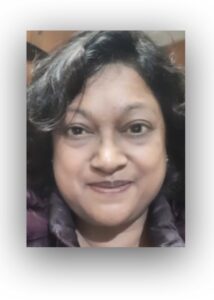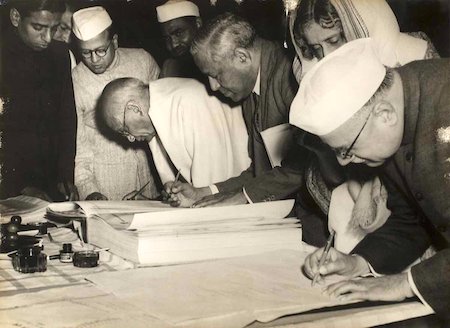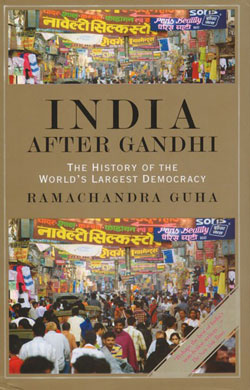Ruby Hembrom, The New Indian Express, 18 May 2016 | To read the entire article and keep track of the author’s column, click here >>
The 15th session of the Permanent Forum on Indigenous Issues opened at New York last week. This annual two-week forum of the United Nations attracts over 1,000 indigenous participants from across the world. On May 10, 2016 a historic statement was made by Canada’s Indigenous Affairs Minister Carolyn Bennett, when she announced that they were officially adopting the UN Declaration on the Rights of Indigenous Peoples after having objected to it in 2007, when it was adopted by the General Assembly. This news had every indigenous person, Canadian or not, celebrate with cheers and tears. This is a milestone in recognising rights of Indigenous peoples. But I was left wondering when that recognition would come to us.
Make no mistake, India did sign the UN Declaration on the Rights of Indigenous Peoples after making it clear that this did not apply to India. But who then are we, the 85 million Indians constitutionally recorded as Scheduled Tribes and who call ourselves Adivasis, Tribal and Indigenous peoples?
A ‘tribe’ as understood in Sociology or Anthropology is generally applicable to a community or cluster of communities characterised by a common territory, language and a cultural heritage, albeit a sub-culture. During the British period, for purposes of administration a number of legislations were enacted for protection of the tribals, but no legislation defined the term ‘tribe’ in that time.
The transition from the terms ‘Tribe’ or ‘Tribal’ to ‘Scheduled Tribe’ took place during the framing of the Indian Constitution. Jaipal Singh Munda, one of the six tribal delegates in the Constituent Assembly of India, advocated for the acknowledgement and rights of identity of India’s original inhabitants, between December 1946 and January 1950. On December 11, 1946, B R Ambedkar, chairman of the Constituent Assembly, introduced Munda as the representative of the ‘aboriginal tribes of Chhota Nagpur’.
Munda used the term ‘Adivasi’ for tribals in all his speeches and debates, determining the location and identity of tribals as the original inhabitants of India. He championed the insertion of the term ‘Aboriginal’ in the draft constitution but it was dropped in favour of ‘Scheduled tribe’ in the final version. Even the word ‘Adivasi’, which he had hoped would be used in place of Scheduled Tribe, at least in Hindi translations of the Constitution, was paid no heed to.
In striking out ‘Aboriginal’ and refusing to include ‘Adivasi’, the term ‘Scheduled Tribe ‘made us a technical status and not one to determine or articulate ethnicity or identity.
The Constitution does not, therefore, recognise Scheduled Tribes as original inhabitants, or peoples who have been victims of conquest and colonisation since foreign invasions. As citizens, Scheduled Tribes are just backward peoples who need uplifting, mainstreaming and affirmative action, and who can be awarded security based on that primitiveness. The phrase itself has managed to eclipse a key part of Adivasi history.
Not only did the Constitution refuse us rights as Aboriginals, Adivasis or Indigenous peoples but that rejection has happened at the UN too. The Indian representation at the UN Working group on Indigenous Peoples Assembly in 1984 repeatedly stated that ‘Scheduled Tribes’ were not indigenous peoples. […]
On January 5, 2011, a momentous judgement by the Supreme Court in dismissing a criminal appeal (Kailas & Ors v State of Maharashtra), in a case of stripping, beating and parading pregnant Nandabai of the Bhil tribe in 1994, placed on record the historical injustice done to India’s Adivasis, aboriginals and indigenous population
The Court framed the case as a typical instance of the manner in which many Indians treat those who are “probably the descendants of the original inhabitants of India”. “These Adivasis make up about 8 per cent of India’s population. They are among the country’s most marginalised and vulnerable communities, with the everyday realities of their lives marked by a high level of poverty, illiteracy, unemployment, disease, and landlessness.” Further stating that “India is broadly a country of immigrants” and that unlike the United States and Canada, both of which are countries of ‘new immigrants,’ India “is a country of old immigrants. Roughly 92 per cent of people in India are descendants of immigrants”. It declared: “It is the duty of all people who love our country to see that no harm is done to the Scheduled Tribes.” Towards the end, it declared: “It is time now to undo the historical injustice to them.”
Adivasi struggles and perspectives come from experiences of discrimination, marginalisation and powerlessness and ours has been one of a long, ongoing call for justice for our rights of restitution and repatriation. Is anyone listening?
Ruby Hembrom is the founder and director of adivaani, an archiving and publishing outfit of and by Adivasis
Email: rubyhembrom@adivaani.org
Source: A phrase that eclipses key histories – The New Indian Express
Address: https://www.newindianexpress.com/columns/A-phrase-that-eclipses-key-histories/2016/05/18/article3437908.ece
Date Visited: Thu May 19 2016 10:41:53 GMT+0200 (CEST)
[Bold typeface added above for emphasis]

Ādivāsi [ādibāsi] may be used in accordance with local conventions; and increasingly so for official purposes (e.g. in “Conserving Tradition and Practices of Adivasi Communities in India” published on NIDM.gov.in); Dr. Ivy Hansdak clarifies:
“Adivasi – which is derived from Sanskrit – is applied to the dark-skinned or Austro-Asiatic indigenous groups of India (usually those from Eastern India). It is a commonly-used term in Jharkhand, Bihar, West Bengal and Odisha. It is also used by the local Mongoloid tribes of North Eastern India for the migrant workers who were brought in as indentured labourers to work in tea plantations during the colonial period. ‘Tribal’ is a very broad term in the English language and includes all the different indigenous groups of India. The terms ‘indigenous’ and ‘aboriginal’ are not used often as the government claims most groups are indigenous in India. ‘Denotified Tribes’ is only used for those nomadic tribes who were notified as ‘criminal tribes’ during the British Raj [colonial rule]; later they were ‘denotified’ but still bear the stigma.” (emails dated 2020 & 2023)

Photo: The Better India >>
Bhimrao Ramji Ambedkar (1891–1956): “Indian jurist, economist, social reformer and political leader who headed the committee drafting the Constitution of India [and] served as Law and Justice minister in the first cabinet of Jawaharlal Nehru” | Wikipedia >>
“The State shall not discriminate against any citizen on grounds only of religion, race, caste, sex, place of birth or any of them.” – Constitution of India & National Human Rights Commission >>
“Religion is a personal matter and should not be politicised.” – Invitation by the Bharat Jodo Abhiyan (BJA) – a civil society platform involving organisations from across 15 states – extended to all like-minded citizens “who take pride in our progressive, inclusive civilization and are committed to our constitutional values of fraternity, liberty, equality and justice” | TheWire (2 January 2024) >>
“The Indian constitution had to empower the state to enter into the realm of Indian society and transform it by eradicating deeply embedded economic, political and social hierarchies.” – “The Foreign and the Indigenous in the Indian Constitution: Constitution Day talk” by Arun Thiruvengadam (Centre for Law and Policy Research, Bangalore, 2 December 2015)
“Tribals are subject to oppression and cruelty even after independence and still picked up by the investigating officers to cover up shoddy investigations. […] The only recourse available to us is to faithfully abide by and give life to the constitutional ideals which Dr Ambedkar helped formulate, and use those to bring transformative change in the minds and perceptions of the society.” – Supreme Court Judge Justice D.Y. Chandrachud (The Wire, 7 December 2021)

“Doctors in the region [Palakkad district] argue that while the proportion of people with mental illnesses is not unusually high, the problem is a crisis because of their socioeconomic vulnerability.” […] “The non-inclusivity of Adivasis is nothing but racial discrimination. Adivasis were always ruled.” | In-depth analysis (Scroll.in 5 April 2023) >>
“Casteism is the investment in keeping the hierarchy as it is in order to maintain your own ranking, advantage, privilege, or to elevate yourself above others or keep others beneath you. […] For this reason, many people—including those we might see as good and kind people—could be casteist, meaning invested in keeping the hierarchy as it is or content to do nothing to change it, but not racist in the classical sense, not active and openly hateful of this or that group.” | Learn more about the effects of “casteism” on tribal communities >>
Source
Book review for “Caste: The Origins of Our Discontents” by Isabel Wilkerson, Dilip Mandal, The Print, 23 August 2020
URL: https://theprint.in/opinion/oprah-winfrey-wilkerson-caste-100-us-ceos-indians-wont-talk-about-it/487143/
Date visited: 10 November 2020
Research the above issues with the help of Shodhganga: A reservoir of theses from universities all over India, made available under Open Access >>
See also
Education and literacy | Right to education
Misconceptions | “Casteism” and its effect on tribal communities
Languages and linguistic heritage
Women | Safe search | President Droupadi Murmu on women’s empowerment
Tips for using interactive maps
Toggle to normal view (from reader view) should the interactive map not be displayed by your tablet, smartphone or pc browser
For details and hyperlinks click on the rectangular button (left on the map’s header)
Scroll and click on one of the markers for information of special interest
Explore India’s tribal cultural heritage with the help of another interactive map >>
